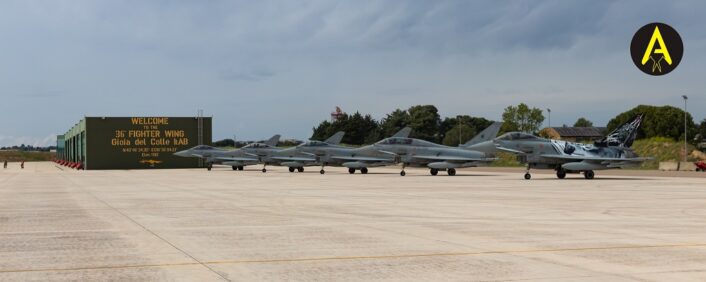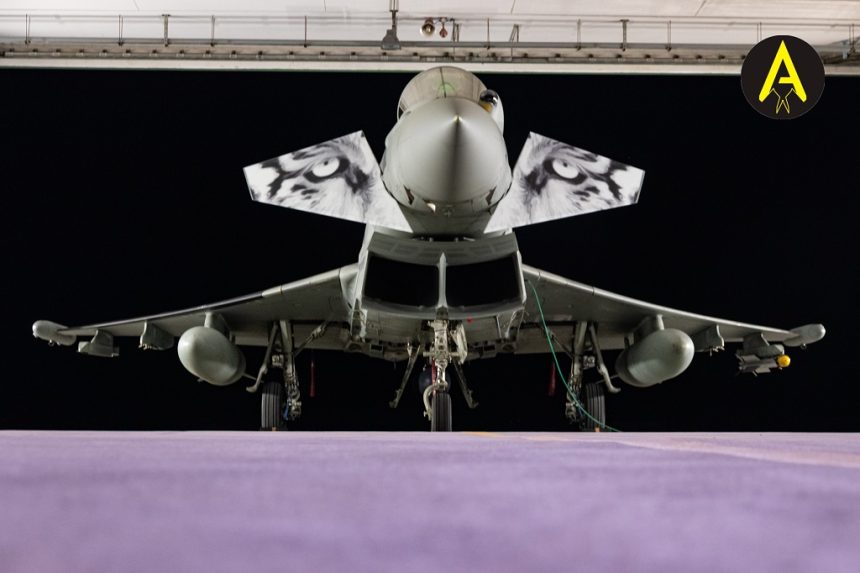We take a closer look at the special livery prepared by the XII Gruppo of the Italian Air Force for The NATO Tiger Meet.
As we reported a few days ago, on May 6, 2022, at Gioia del Colle Air Base, in southeastern Italy, home of the 36° Stormo (Wing), the Italian Air Force unveiled a Eurofighter Typhoon in Special Color scheme that was prepared for this year’s edition of the Tiger Meet, the international exercise attended by all the NATO flying units that have a tiger as their emblem.
This Eurofighter Typhoon (F-2000A in accordance to Italy’s MOD Mission Design Series) is assigned to the XII Gruppo Caccia (Fighter Squadron), which is one of the two Italian units usually taking part in NTM, with the other being the 21° Gruppo (Squadron) of the 9° Stormo, based at Grazzanise, which flies HH-101 Caesar and HH-212 helicopters. However, this year, only the 12° Gruppo will attend the exercise at Araxos Air Base, Greece.
The 12° Gruppo is a particular case in the NATO Tiger Association, as its emblem does not feature a tiger, but instead features the famous prancing horse of Francesco Baracca. Since 1968, the only Italian unit in the NTA was the 21° Gruppo, whose emblem features the tiger. In 2001, the squadron was disbanded and one of its subordinate units, the 351^ Squadriglia (Flight) “Tigri Bianche” (White Tigers), was reassigned to the 12° Gruppo which was therefore issued NTA Full Member status immediately.
Every unit usually prepares a specially painted aircraft for the Tiger Meet. The XII Gruppo unveiled its special livery on the day the Eurofighters departed for Araxos, preceded by a test flight to check that all the vinyl stickers worked as intended. The Italian detachment for the exercise is composed by a total of five aircraft, four single seaters and one twin-seater (TF-2000A).
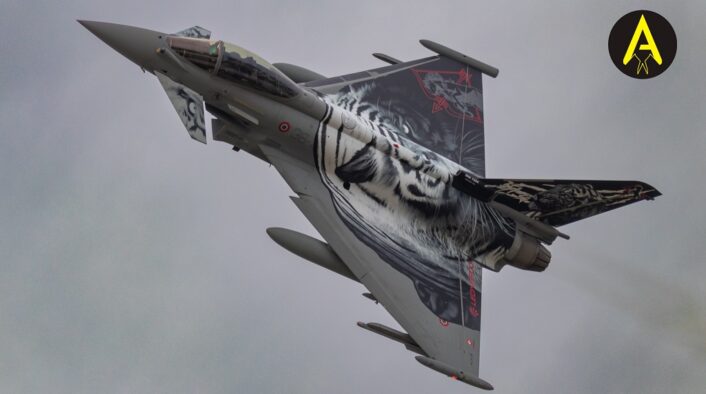
The special color F-2000 features multiple images. Beginning from the foreplanes (as are technically called the Eurofighter’s canards), we can see the traditional tiger eyes, which are best seen from above or when the foreplanes are in the “rest” position on the ground. The airbrake features the 351^ Squadriglia’s emblem with its white tiger, which is then expanded on the tail.
The tail, in fact, shows a large three-quarter angle of a white tiger’s head, which is over imposed on the scratches from the tiger’s claws. Near the tail’s root there is the inscription with the Flight’s name, 351 Sq., while in the angle of the tail’s upper tip there is also the 12° Gruppo emblem, which features a red bow and arrow and a black prancing horse.
The images from the tail are expanded in the main drawing of this special color, which is made to be observed from a top view. In the center, spanning on the wings across the fuselage, there is a large front angle view of the white tiger, while near the right wingtip there is again the squadron’s emblem, with more detailed bow, arrow and prancing horse.
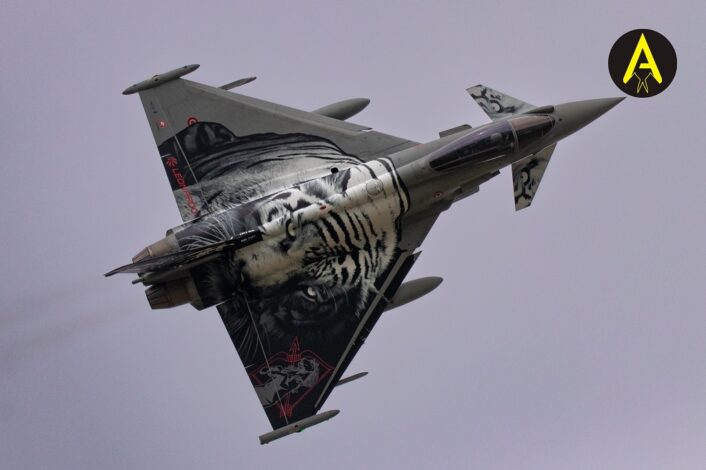
This special color, dubbed the “Dark Tiger”, has been designed by one of the pilots, Capt. Luca P., which is also a skilled static scale modeler and builds models and dioramas in his spare time. You can find some of his work at his Instagram page @italianscale. While in Gioia del Colle, we were able to talk to Luca and he provided us with some insights about the creation process of this livery.
The initial idea for the project originated in December 2021. The tiger comes from a photo which was first converted in black and white and then adapted with the use of Photoshop. After this first adaptation was complete, the image was then converted to vectorial graphic in Corel Draw and adapted as a stencil. As for the squadron’s emblem, the work started from an handmade drawing which was then processed exactly as the tiger’s image.
Visualizza questo post su Instagram
Here is where the experience grown as a scale modeler came in handy, as a 1:72 scale model of a Eurofighter 2000 was used as prototype to check and compensate for the deformation that the shape of the fuselage would cause to the tiger’s image as seen from the top, so it could be seen correctly once applied to the real aircraft.
Once the desired visual impact was achieved, with all the fuselage-induced deformations accounted for and without gaps in the final image due to the assembly process, the graphics were printed on vinyl thanks to the help of a specialized local company, WeMakers, and the sponsorship from Leonardo. The whole printing and application process on the aircraft took about two days of work.
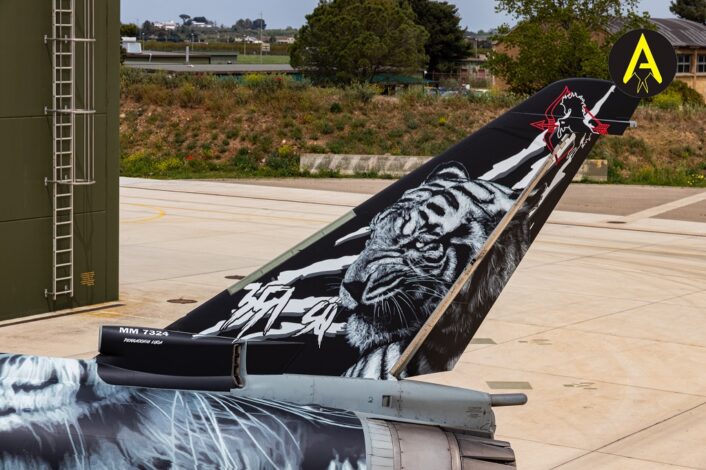
This year’s edition of the multinational exercise, which is hosted by Hellenic Air Force 335 Mira (Squadron) for the first time since its NATO Tiger Association membership, is slated to go from May 9 to 20. The live-fly event will see more than 60 fighter jets, helicopters, Airborne Early Warning aircraft and 1,000 personnel from Allied and Partner Air Forces from across Europe working together daily.
“It is an honour for 335 Squadron to host the NATO Tiger Meet for the first time,” said Lieutenant Colonel Ntanos Ioannis, Officer Commanding 335 Squadron. “Conducting high intensity, joint training with colleagues from different nations is essential to sharpen our skills and build a collective understanding for the execution of air operations.”
Let’s not forget that this is the second multinational exercise hosted by Grece in a little more than a month, following the Iniochos 2022 exercise which lasted from March 28 to April 7. The exercise was held at Andravida airbase and, among the others, saw the participation of the Italian Air Force with a detachment of Tornado aircraft.
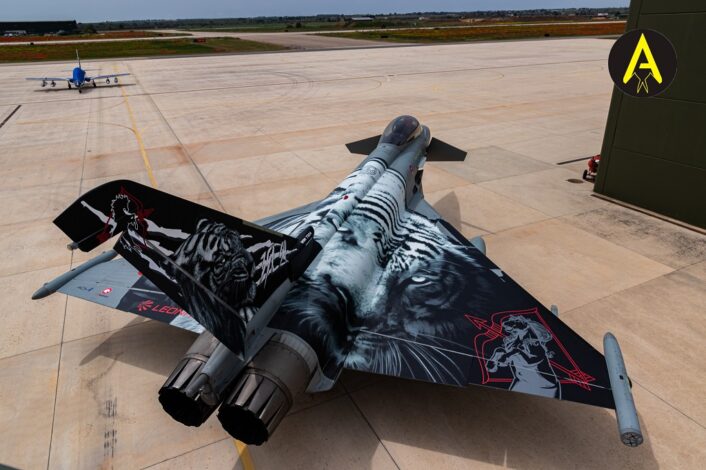
This multinational environment provides a unique opportunity to all participants, offering high quality operational training under the concept ‘Train as you Fight’, improving tactics, techniques and procedures, and taking interoperability to the next level, while also tightening the bonds of friendship and promote the long living NATO Tiger Association’s traditions.
The first Tiger Meet dates back to 1961, when the 79th Tactical Fighter Squadron of the United States Air Force in Europe, the No.74 Squadron of the Royal Air Force and EC 1/12 Squadron of the French Armée de l`Air met at Woodbridge in England. The three squadrons had something in common, a tiger’s head in their squadron crest, which stands as a symbol of strength, speed and hunting prowess.
Due to the success of this first meet, it was decided that future meets would be held annually. At the second Tiger Meet, the squadrons formulated three aims which still remain valid to this day: the improvement of solidarity between NATO members; the creation and maintenance of team-spirit and camaraderie between the participating members; the exchange of experiences and cooperation in line with the military goals of NATO.

Since then, Tiger Meets evolved into a first-class military exercise where the participants fly Composite Air Operation (COMAO) missions encompassing the entire spectrum of military operations. Alongside low altitude flying, the emphasis is also placed on air to air refueling, air combat, the use of weapon ranges, etc.
The exchange of experiences between aircrews from different nations is not to be underestimated, with each squadron always trying to bring at least one two-seater aircraft to the Tiger Meet and trade backseat rides. These rides expose aircrews to the way things gets done by different nations, showing either different ways to perform the assigned missions among units flying the same aircraft or, if the units fly different aircraft, how to better integrate during joint missions.
The typical program of the 12 days NATO exercise, which generates not less than 800 flight sorties, starts with the arrival of the participants, briefings, familiarization flights and an opening ceremony were flags of all participating nations are raised. As we already mentioned, the exercise is also the right occasion to tighten social strengths between all participating units and, at the end of the first week, the Tiger Games, mainly a mix of fun and sports, are held.

Usually, during flying days, in the morning most participants fly local missions among each other, also called Shadow Waves, while the afternoon is reserved for the COMAOs of increasing difficulty. Composite Air Operations cover a wide spectrum of the modern air warfare, such as Defensive/Offensive Counter Air, Air Interdiction, Dynamic Targeting, TST Targeting, Suppression – Destruction of Enemy Air Defense, APCLO, APCMO.
Due to the growing helicopter force within the NTA members and their heavy use in today’s conflicts, they are integrated within the COMAO mission as Forward Air Controllers, insertion and extraction of ground forces, support of Special Ops, Combat Search And Rescue and so on. Among the helicopters involved in these missions there are the Italian HH-212 and HH-101 and the Czech Mi-24 Hind attack helicopters.
At the end of the second week of the exercise, there is the traditional farewell party during which various awards are handed out, with the Silver Tiger Trophy being the most important one. During last year’s edition, which was held at Beja Airbase in Portugal, the 12° Gruppo won both the Silver Tiger Trophy and the Best Uniform trophy, while the Portuguese Esq 301, the hosting unit, won the Best Tiger Aircraft and Best OPS trophies.
